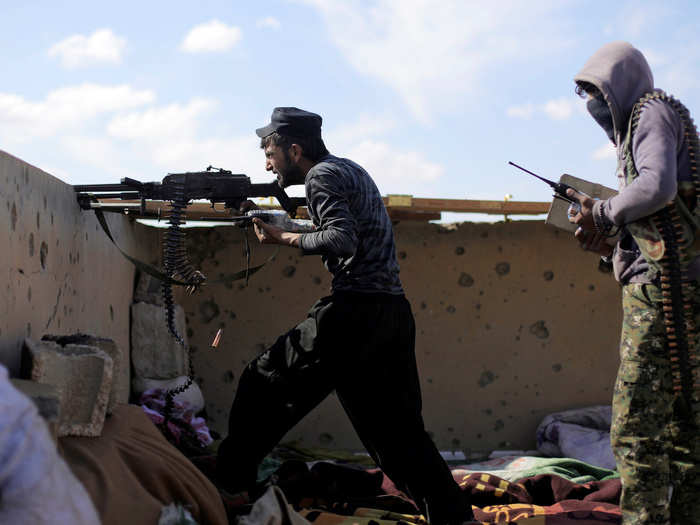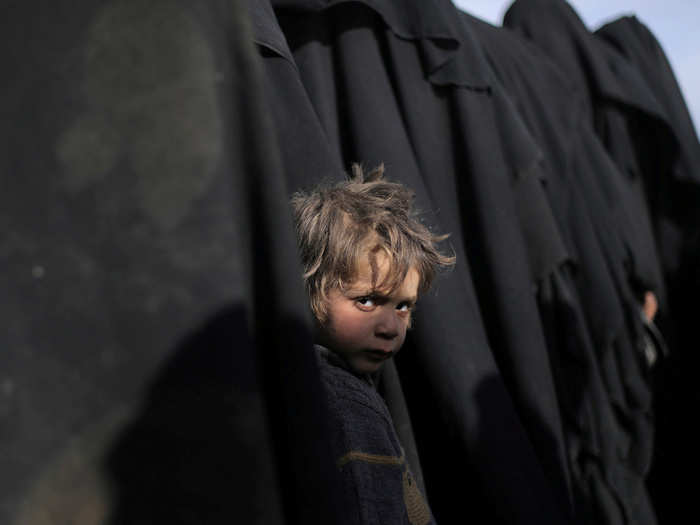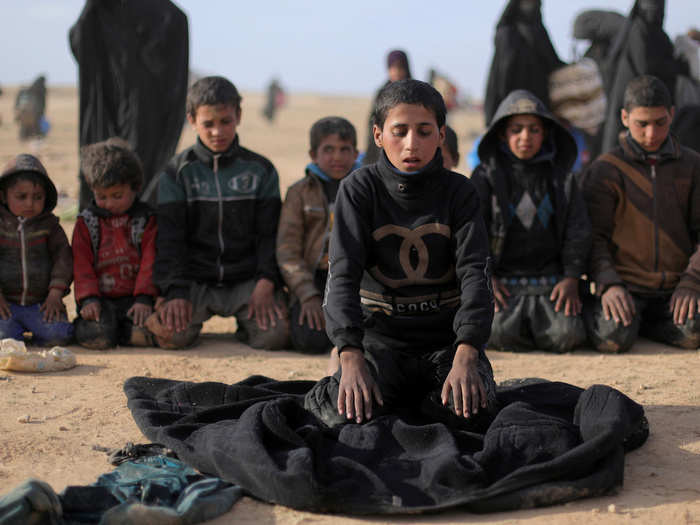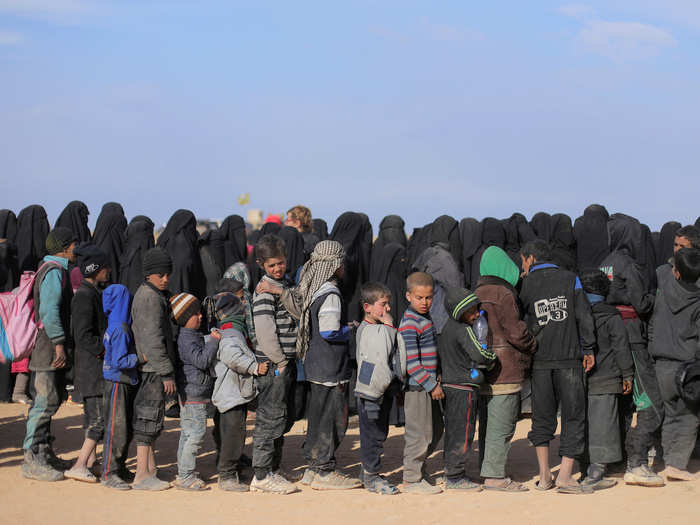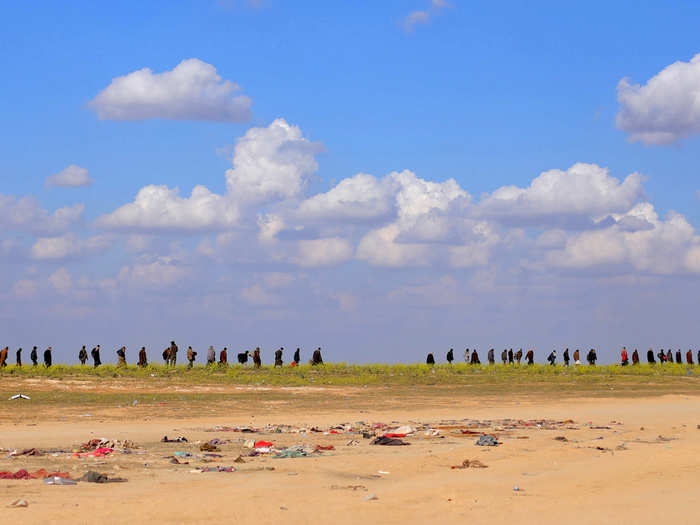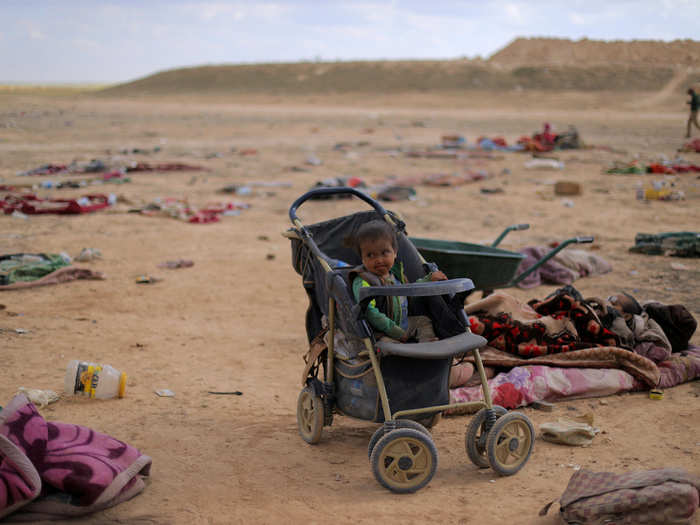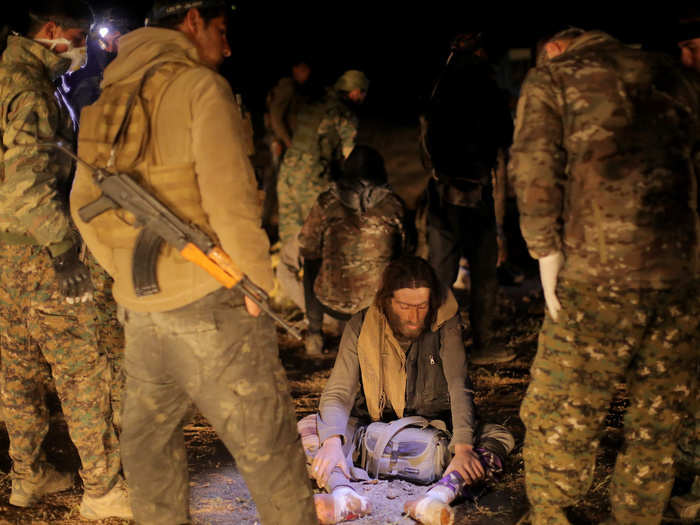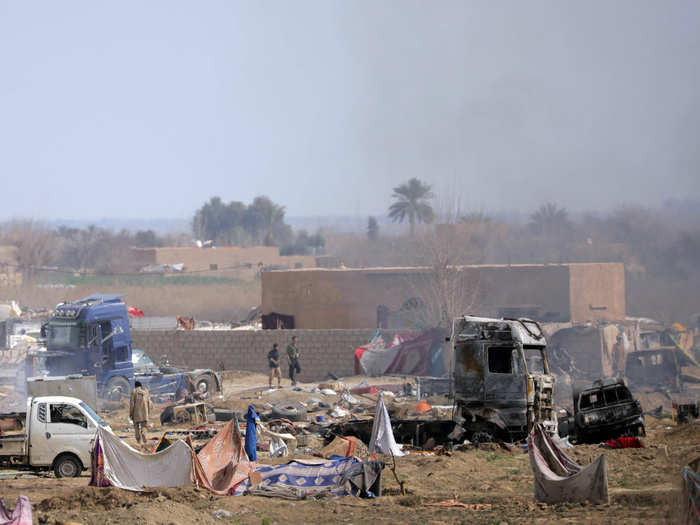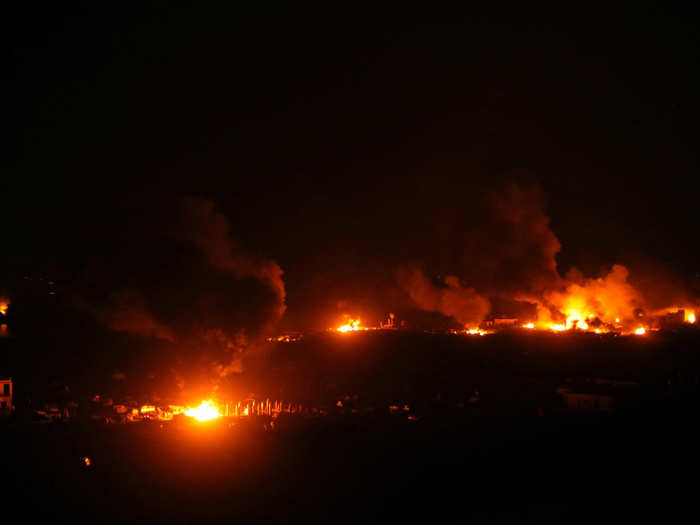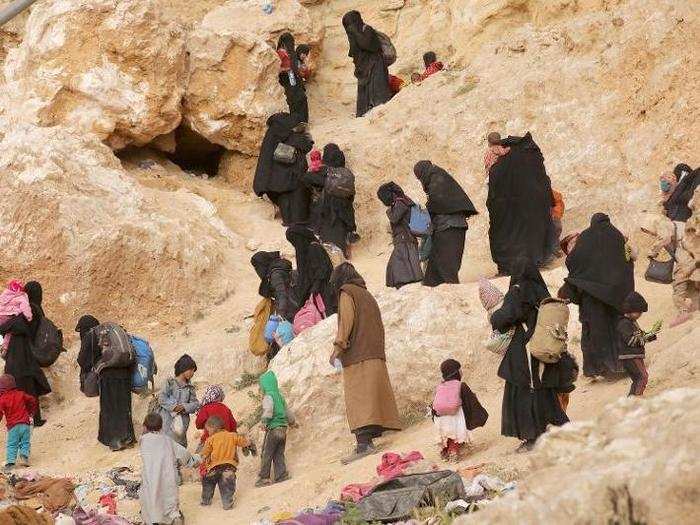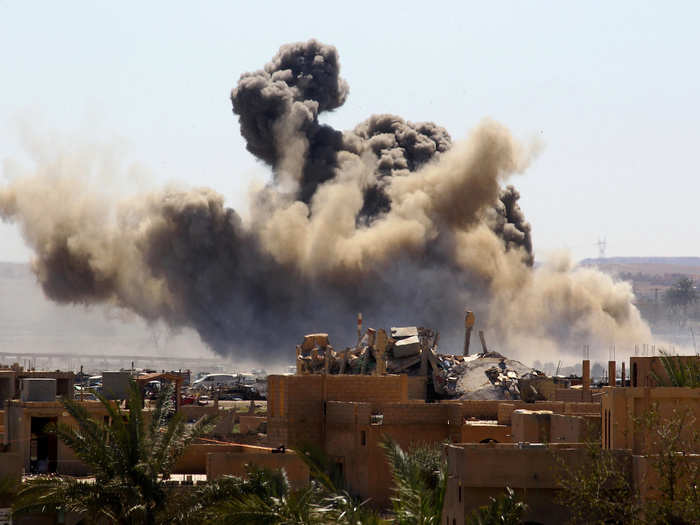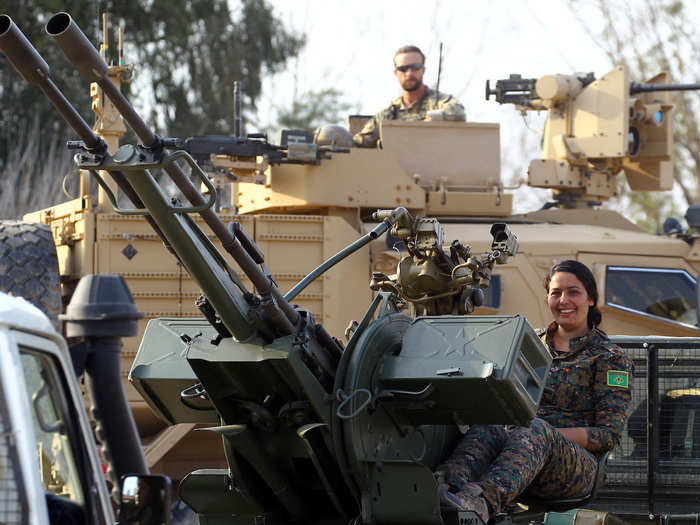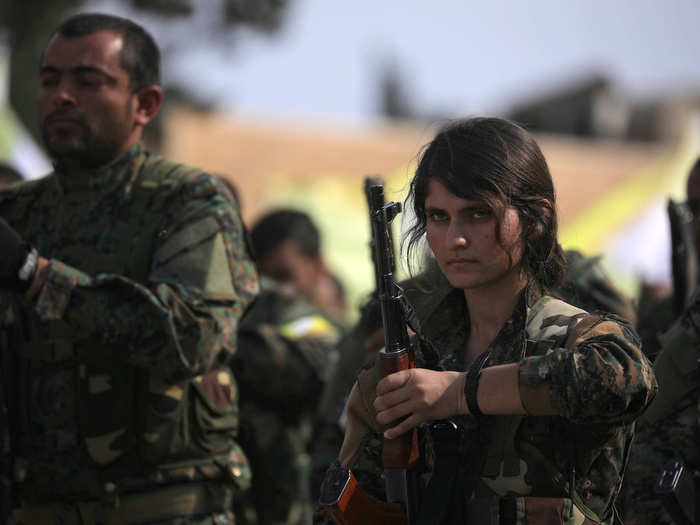The exodus was sparked in part by heavy coalition bombardment. Human Rights Watch found 630 "major damage sites ... consistent with the detonation of large, air-dropped munitions" in the area between January 19 and February 20.
But SDF and US officials stressed that there is more to be done to ensure the terrorist group's defeat. William Roebuck, a senior US diplomat, said there was still "much work to do," and Gen. Mazloum Abdi, the SDF commander-in-chief, requested continued assistance for his forces.
The Kurds who lead the SDF are apprehensive about the post-ISIS period, fearing that the US will withdraw its support. The group is caught between troops from Turkey, which regards Kurds as terrorists and a national threat, to the north and the forces of Syrian dictator Bashar Assad to the south.
ISIS fighters continue to hide out in Syria's remote central desert, while others are still active in Iraq, waging a guerrilla campaign of shootings and kidnappings. The US also believes Abu Bakr al-Baghdadi, ISIS' leader, is in Iraq. The group has spread farther afield, appearing in North Africa and Afghanistan.

